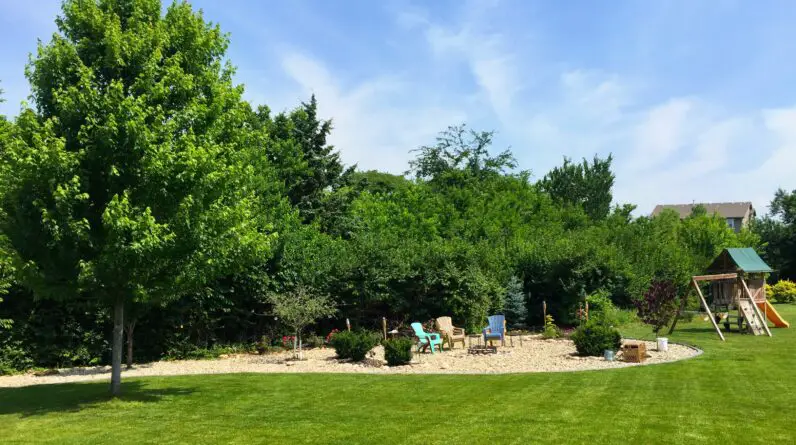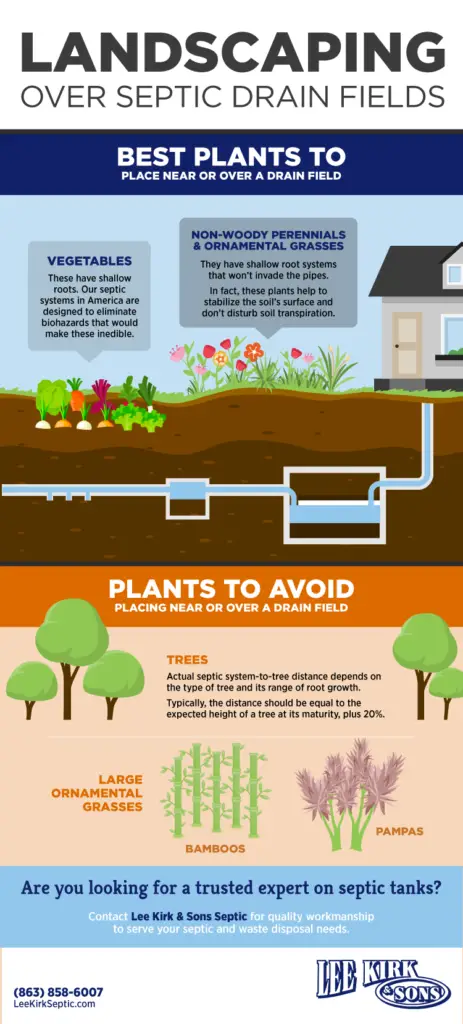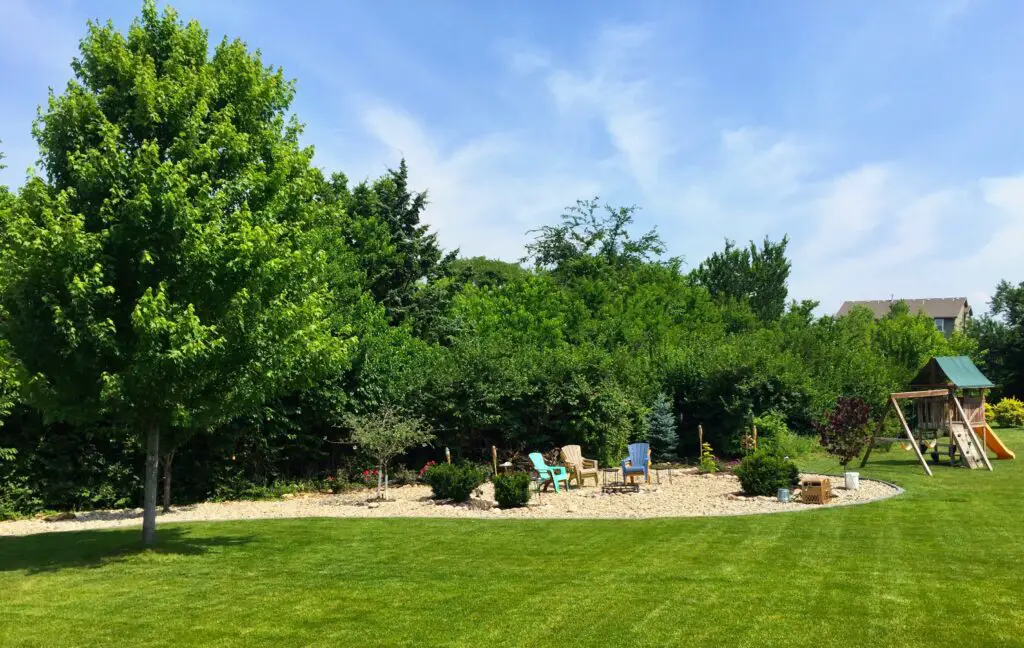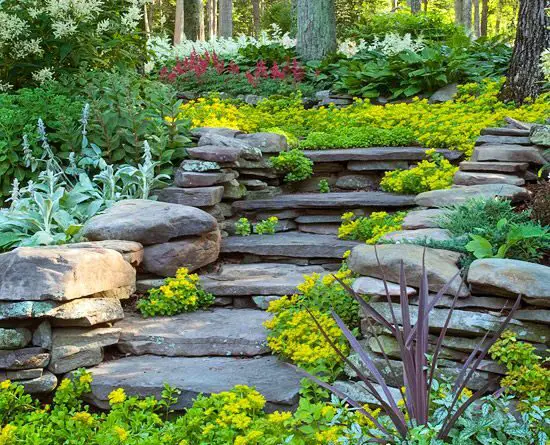
Have you ever wondered if it’s safe to do landscaping over your septic tank? Well, good news! In this article, we’ll be diving deep into the world of content landscaping over septic tanks and all the dos and don’ts you need to know.
When it comes to landscaping over your septic tank, there are a few important factors to consider. First and foremost, you need to be mindful of the location of your septic tank and drain field. It’s crucial to know where these areas are so that you don’t accidentally damage them while beautifying your yard. Additionally, you’ll want to choose plants and trees that have shallow root systems, as deep roots can potentially invade and disrupt the septic system. We’ll be going into more detail on these points and much more in the following paragraphs, so keep reading to become a pro at content landscaping over your septic tank!
Landscaping Over Septic Tank

Click Here For The Best Gardening Tools On The Market!
What is a septic tank?
A septic tank is an underground wastewater treatment system commonly used in areas where municipal sewage systems are not available. It is a vital component of many residential and commercial properties, efficiently disposing of waste and protecting the environment. Understanding the purpose and functioning of a septic tank is crucial for maintaining its functionality and longevity.
Overview of septic tank systems
A septic tank system consists of two main components: the septic tank and the drain field. The septic tank is a large, watertight container made of concrete, fiberglass, or plastic. It receives and stores the wastewater generated from toilets, sinks, showers, and laundry facilities. The drain field, also known as the leach field, is an area of soil where the treated wastewater is dispersed.
Purpose and functioning of a septic tank
The purpose of a septic tank is to separate solid waste from the liquid effluent and promote the decomposition of organic matter. When wastewater enters the septic tank, solids settle at the bottom, forming a layer of sludge. Grease and lighter particles float to the top, creating a layer of scum. The remaining liquid, known as effluent, flows into the drain field for further treatment by soil bacteria.
Importance of landscaping over septic tanks
Landscaping plays a significant role in preserving the functionality of septic systems. Properly designed and maintained landscaping helps ensure the efficient operation of a septic tank while enhancing the aesthetic appeal of a property.
Preserving the septic system’s functionality
Carefully planning the landscaping around a septic tank is crucial to avoid interfering with its functioning. Poorly chosen plants or excessive water use can harm the septic system, leading to costly repairs or even failure. By following best practices for septic tank landscaping, you can help preserve its functionality and avoid potential issues.
Maintaining aesthetic appeal
Septic tank areas often pose a challenge when it comes to landscaping, as they require careful consideration of plant selection and placement. However, with proper planning, you can create an attractive and visually appealing landscape that complements the overall design of your property.
Preventing damage to the septic tank
Misplaced plantings or improper landscaping techniques can pose a risk to the septic tank itself. Tree roots can penetrate pipes and septic tank walls, causing damage and obstruction. Heavy machinery used for landscaping purposes can also inadvertently damage the tank or its components. Implementing septic-friendly landscaping techniques can help prevent such risks and ensure the longevity of your septic system.
Click Here For The Best Gardening Tools On The Market!
Choosing suitable plants for septic tank areas
When selecting plants for septic tank areas, several factors need to be considered. It is essential to choose plants that can tolerate the specific conditions found around a septic tank and avoid those that may cause harm.
Considerations for plant selection
Plants near septic tanks should be able to withstand occasional flooding, as well as periods of dryness. They should also have shallow root systems to prevent interference with septic tank components. Consider the soil type, light conditions, and climate of your specific location when choosing suitable plants.
Types of plants to avoid near septic tanks
Certain plants may have invasive root systems that can cause damage to septic tanks. Avoid planting trees with aggressive root systems, such as willows, poplars, and silver maples. Additionally, plants that require excessive watering or produce excessive amounts of organic matter, such as bamboo or English ivy, should be avoided.
Recommended plants for septic tank areas
Several plants are well-suited for septic tank areas due to their adaptability and low maintenance requirements. Some examples include ornamental grasses like fountain grass (Pennisetum), drought-tolerant perennials like coneflowers (Echinacea), and ground covers like creeping thyme (Thymus). Consult with a local horticulturist or landscape professional to determine the best plants for your specific area.
Designing a septic-friendly landscape
Designing a septic-friendly landscape involves careful consideration of the septic tank components, proper drainage systems, the incorporation of hardscapes, and accessibility for maintenance.
Working around septic tank components
The location of the septic tank and its components should be considered when planning the landscape design. Ensure there is adequate clearance around the tank and any access points for maintenance purposes. Avoid planting anything directly on top of the tank or drain field.
Creating proper drainage systems
Well-designed drainage systems are vital to prevent excess water from flowing towards the septic tank area. Poor drainage can lead to oversaturation of the soil, which can compromise the performance of the septic system. Consider incorporating swales, French drains, or dry wells to direct excess water away from the septic tank.
Incorporating hardscapes into the design
Hardscapes, such as walkways, decks, or patios, can provide both functional and aesthetic benefits when designed around a septic tank. These features reduce the need for plants near the septic system, minimizing the risk of root intrusion and creating visually appealing spaces for outdoor activities.
Ensuring accessibility for maintenance
Adequate access to the septic tank is essential for regular maintenance and inspections. When designing the landscape, ensure there is sufficient space around the tank and any required access points. This will facilitate regular pumping, troubleshooting, and repairs, ensuring the long-term functionality of the septic system.

Implementing best practices for septic tank landscaping
Once the landscape design is complete, it is essential to follow best practices for ongoing maintenance and responsible water usage.
Proper maintenance of the landscaping
Regular maintenance is crucial for the health and longevity of the septic system. Monitor plant growth, prune as necessary, and remove any debris that may accumulate near the tank or drain field. Prevent excessive thatch buildup by raking leaves and grass clippings away from the septic tank area.
Managing water usage
Excessive water usage can overwhelm a septic system and disrupt its functioning. Practice water-conserving habits, such as fixing leaky faucets, using water-efficient appliances, and spacing out laundry loads. Minimize the use of water-intensive features, like decorative fountains or excessive irrigation systems, near the septic tank area.
Disposing of waste responsibly
In addition to managing water usage, it is crucial to dispose of waste properly. Avoid flushing anything other than toilet paper and human waste down the drain. Harsh chemicals, grease, or non-biodegradable items can disrupt the delicate balance of the septic system and harm the surrounding environment.
Potential risks and challenges
While implementing landscaping over septic tanks offers numerous benefits, there are also potential risks and challenges that need to be considered.
Root intrusion into septic system
Tree and plant roots are naturally drawn to the moisture and nutrients near a septic system. If invasive plants or trees with aggressive root systems are planted too close to the septic tank, they can invade the pipes and cause blockages or damage.
Overloading the septic tank
Excessive water usage, such as large amounts of water from landscaping irrigation, can overload the septic tank system. When the tank becomes overloaded, it can lead to system failure and the need for costly repairs or replacement.
Risk of damage during landscaping activities
During landscaping or construction activities, there is a risk of accidental damage to the septic tank or drain field. Heavy machinery, digging, or improper disposal of materials can cause harm or obstruction to the system. It is crucial to use caution around the septic tank area and hire professionals experienced in working near septic systems.

Ensuring compliance with local regulations
Before beginning any landscaping activities near a septic tank, it is important to understand and comply with local codes and regulations. Different areas may have specific requirements for setbacks, installation, and maintenance of septic systems. Additionally, obtaining any necessary permits ensures that you are following the proper procedures and guidelines.
Hiring professionals for septic tank landscaping
When it comes to landscaping over septic tanks, hiring experienced professionals is highly beneficial. They possess the expertise and knowledge to design and implement septic-friendly landscapes while ensuring compliance with local regulations.
Benefits of hiring experienced landscapers
Experienced landscapers understand the unique challenges and considerations involved in working near septic tanks. They can provide guidance and recommendations for the best plant selections, drainage systems, and hardscape designs. Their expertise can help minimize risks and ensure the long-term functionality and aesthetic appeal of your septic system.
Choosing the right professionals for the job
When hiring professionals for septic tank landscaping, it is essential to research their experience, qualifications, and reputation. Ask for recommendations or reviews from previous clients and ensure they are licensed and insured. Communication is key, so clearly express your needs and expectations to find the right professionals for the job.

Educating homeowners about septic tank maintenance
As a homeowner with a septic tank, it is crucial to educate yourself about septic system care and the importance of landscaping maintenance. By understanding and following proper maintenance guidelines, you can ensure the longevity and functionality of your septic system.
Informing homeowners about septic system care
Provide homeowners with information on the proper care and maintenance of septic systems. This includes guidelines for water usage, waste disposal, and regular inspections. Educating homeowners about the importance of landscaping over septic tanks can help prevent costly repairs and environmental damage.
Providing guidelines for landscaping upkeep
Provide homeowners with guidelines for maintaining and updating the landscaping around their septic tank. This includes recommendations for plant selection, pruning techniques, and regular monitoring. By providing clear and concise guidelines, homeowners can contribute to the overall health and functionality of their septic system.
Conclusion
Proper landscaping over septic tanks is essential for preserving the functionality, aesthetics, and longevity of the septic system. By selecting suitable plants, designing septic-friendly landscapes, implementing best practices for maintenance and water usage, and complying with local regulations, you can ensure the health and performance of your septic system. With proper education and the help of experienced professionals, homeowners can create beautiful landscapes that enhance their property while protecting the environment.





